Background
Our collections contain primary source material relating to the campaign for women’s suffrage. The majority of this collection forms part of the Women’s Library, whose roots are founded in the suffrage movement. This collection includes personal papers of suffragists and suffragettes, records of suffrage organisations and the newspapers, journals and pamphlets published by these organisations. There are also badges, postcards, posters, banners and other 3D objects on this subject.
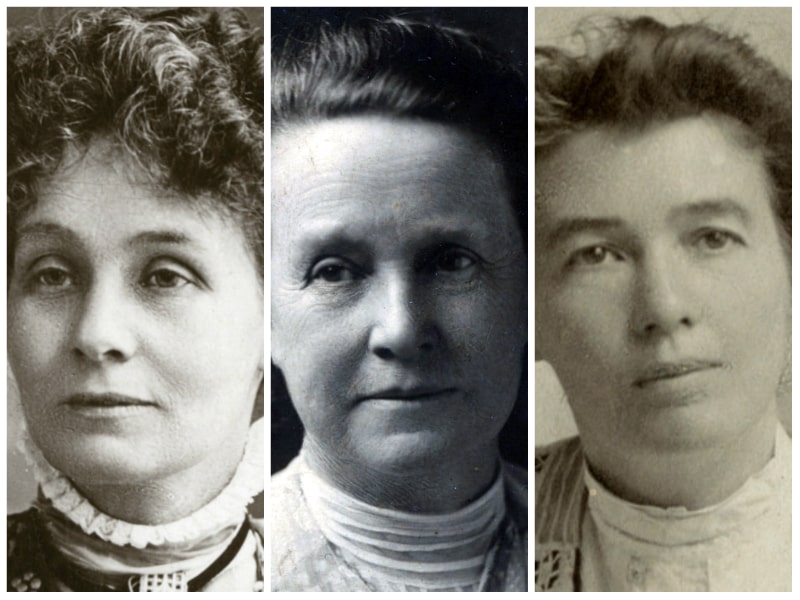 Emmeline Pankhurst, Millicent Garrett Fawcett and Emmeline Pethick-Lawrence.
Emmeline Pankhurst, Millicent Garrett Fawcett and Emmeline Pethick-Lawrence.
LSE and the suffrage movement
LSE was at the heart of suffrage activity between 1906 and 1914. To mark the historical link between LSE and suffrage, the Towers on campus have been renamed Pankhurst House, Fawcett House and Pethick-Lawrence House after three important suffrage campaigners and their specific connections to LSE.
The offices of the Women's Social and Political Union (WSPU), the suffragette organisation led by Emmeline Pankhurst, were on the site now occupied by the former Tower 3. This was the London home of Emmeline and Frederick Pethick-Lawrence who also financed and edited Votes for Women, the newspaper of the WSPU.
LSE is the custodian of the Women's Library, which has its roots in the suffrage movement. The Women's Library also holds the papers of Millicent Garrett Fawcett and of the Fawcett Society. Millicent Garrett Fawcett was a suffragist and women's rights campaigner who made it her lifetime's work to secure for women the right to vote.
Votes for Women: a history of the women’s suffrage campaign & its legacy at LSE
Find out more about LSE and suffrage in these blogs:
Millicent Garrett Fawcett and the early suffrage movement
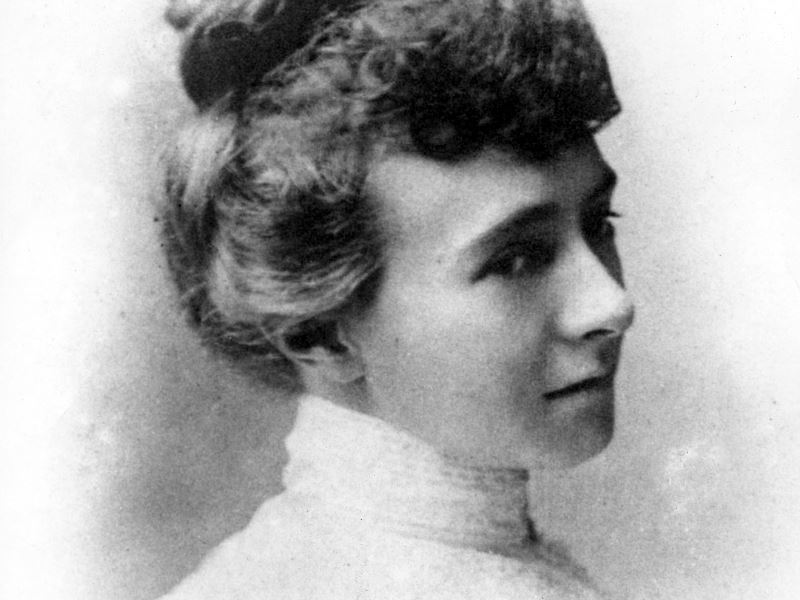 Emily Wilding Davison, c.1905.
Emily Wilding Davison, c.1905.
The Pankhursts and Women's Social and Political Union (WSPU)
Material relating to Emmeline Pankhurst and her daughters, Christabel and Sylvia, is dispersed throughout the collection. Papers relating to the WSPU can be found in the personal papers of suffragettes.
Some other characters of the WSPU
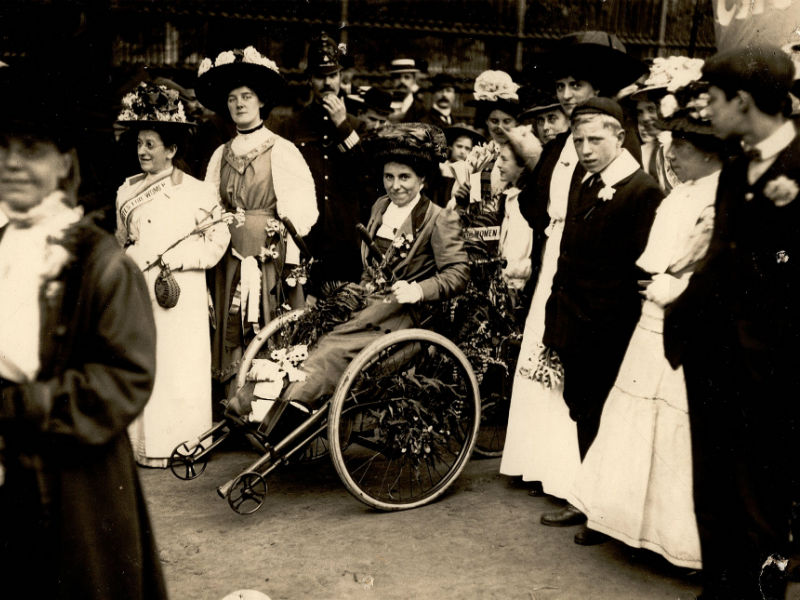 Rosa May Billinghurst, known as May, founded the Greenwich branch of the WSPU.
Rosa May Billinghurst, known as May, founded the Greenwich branch of the WSPU.
May fearlessly took part in suffrage demonstrations in her tricycle.
Learn about Rosa May Billinghurst in this online exhibition.
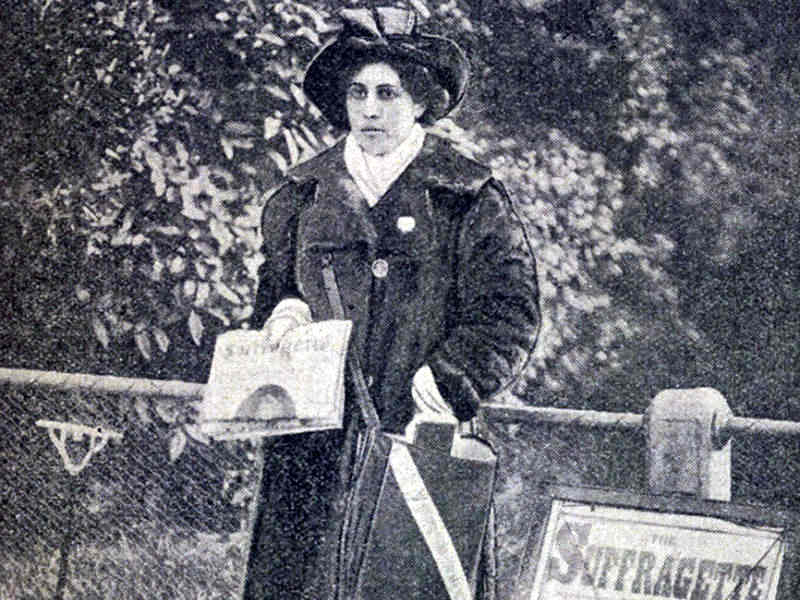 Princess Sophia Duleep Singh, a member of the WSPU and the Tax Resistance League. She was often seen selling The Suffragette newspaper outside Hampton Court Palace.
Princess Sophia Duleep Singh, a member of the WSPU and the Tax Resistance League. She was often seen selling The Suffragette newspaper outside Hampton Court Palace.
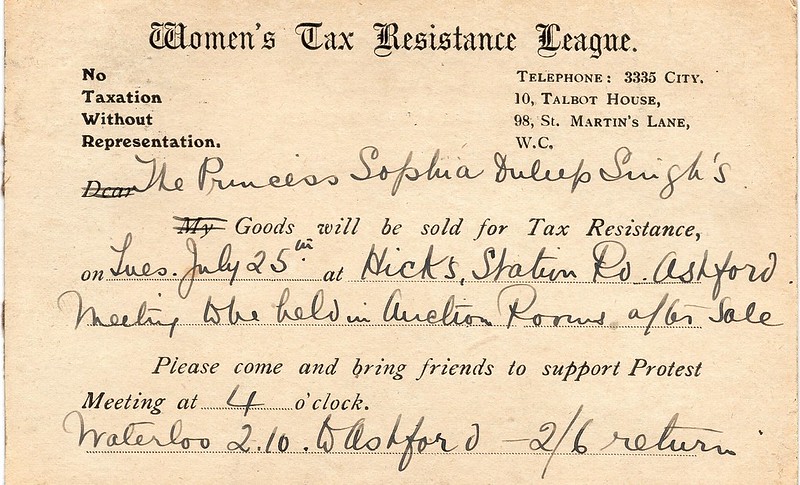 Sophia was part of the Women’s Tax Resistance League and this card shows the auction of her goods instead of paying taxes as part of the ‘No Vote, No Tax’ campaign
Sophia was part of the Women’s Tax Resistance League and this card shows the auction of her goods instead of paying taxes as part of the ‘No Vote, No Tax’ campaign
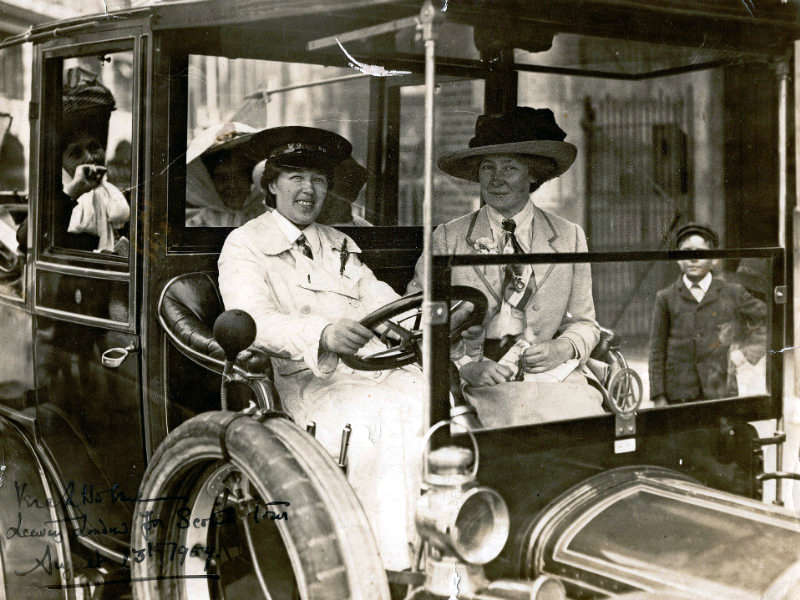 Vera 'Jack' Holme, a cross-dressing actress, suffragette and one of the first women chauffeurs.
Vera 'Jack' Holme, a cross-dressing actress, suffragette and one of the first women chauffeurs.
During the First World War, Vera 'Jack' Holme was an ambulance driver for the Scottish Women's Hospital in Serbia. Learn about Vera in this online exhibition.
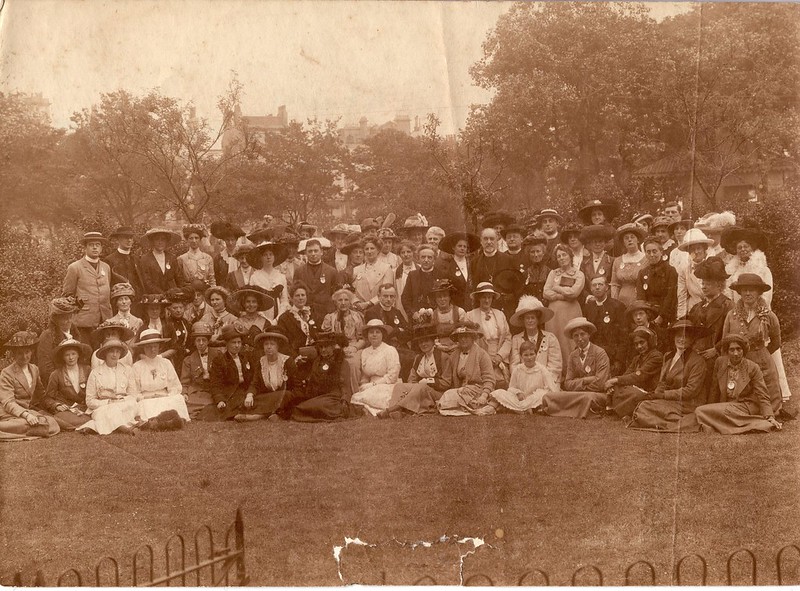 Susila Bonnerjee and Nolini Bonnerjee were active in the Church League for Women’s Suffrage seen in the the bottom right of this photograph from 1913
Susila Bonnerjee and Nolini Bonnerjee were active in the Church League for Women’s Suffrage seen in the the bottom right of this photograph from 1913
Pro-suffrage men
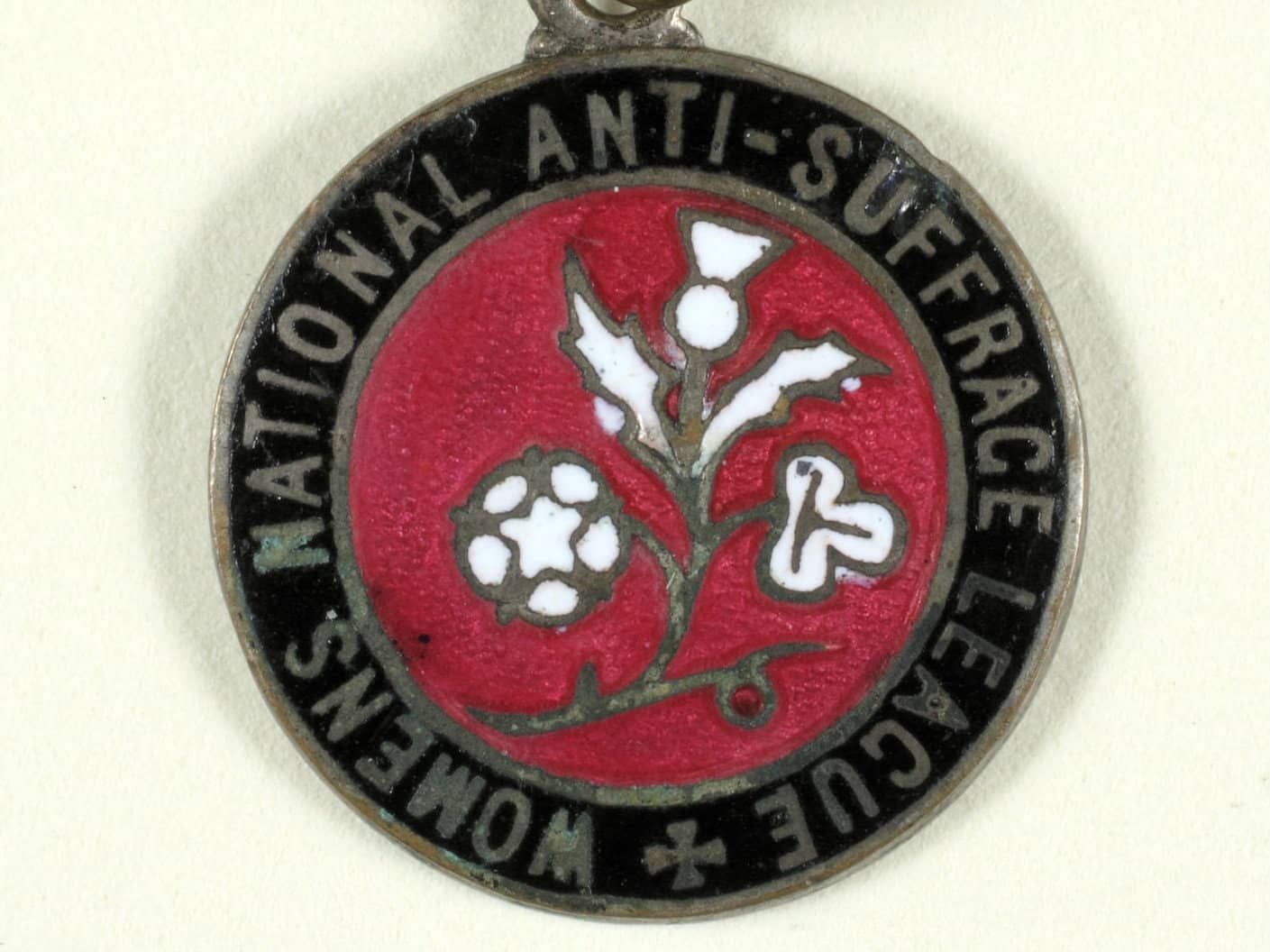 Badge from the Women's National Anti-Suffrage League 1908-1910.
Badge from the Women's National Anti-Suffrage League 1908-1910.
Anti-suffrage societies
- Women's National Anti-Suffrage League was founded in 1908 at a time when support for the women’s suffrage movement was rising again. Records of other anti-suffrage societies are dispersed throughout the collection.
Women's suffrage collection on the Digital Library
Explore the women’s rights collection on LSE Digital Library. It contains two sets of suffrage newspapers and journals, pamphlets and leaflets and the annual reports of suffrage groups, covering the campaign from the late 19th century to 1928 when women achieved equal voting rights with men. Here are the three main suffrage newspapers:
- The Common Cause was the newspaper of the National Union of Women’s Suffrage Societies published from 1909 until 1920. Helena Swanwick was its first editor.
- Votes for Women was co-edited by Emmeline Pethick-Lawrence and her husband, Frederick. This was the newspaper for the Women’s Social and Political Union, published between 1907 and 1918.
- The Vote was the newspaper of the Women’s Freedom League. Its first editor was Charlotte Despard and it was published from 1909 to 1933.
Online resources
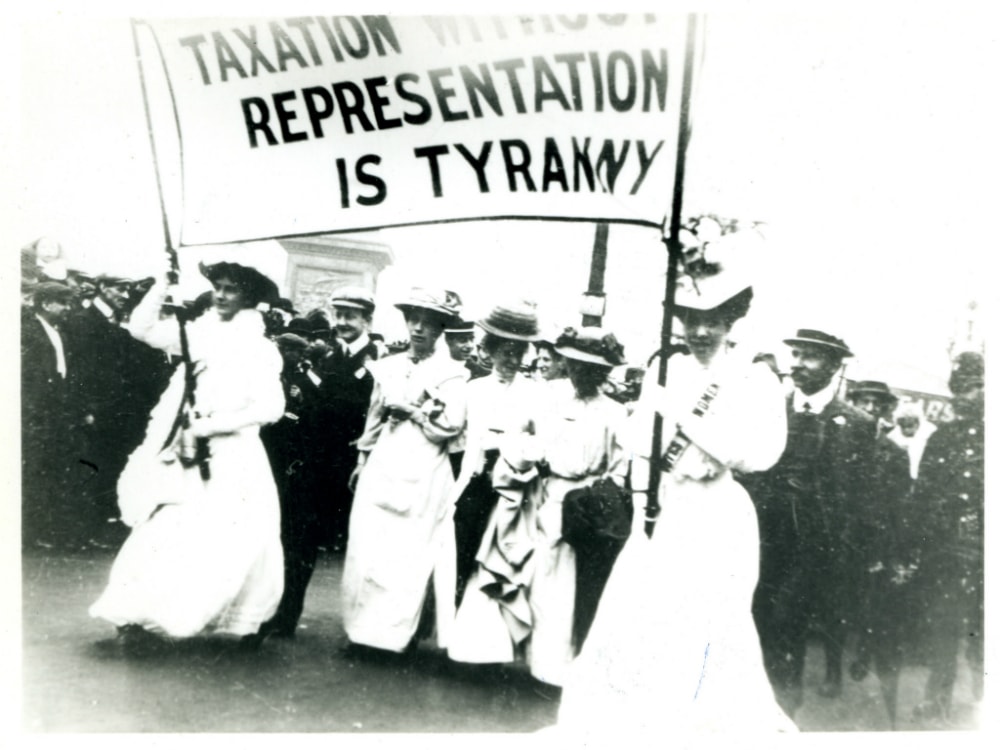 A suffrage parade, c.1908.
A suffrage parade, c.1908.
How to search
You can find more material on this topic using a person’s name, by organisation, by event eg 'Black Friday', or by keyword such as anti-suffrage, emancipation, franchise, suffrage, suffragette, suffragist, in these catalogues.
View lists of further resources covering:
How to access
Most of the material highlighted here is stored in closed access and must be consulted in The Women’s Library Reading Room. Find out how to book your place and order material on our access archives and special collections page.
Further information
If you need specific help with any of the collections mentioned here get in touch with our Curator for Equality, Rights and Citizenship, Gillian Murphy.